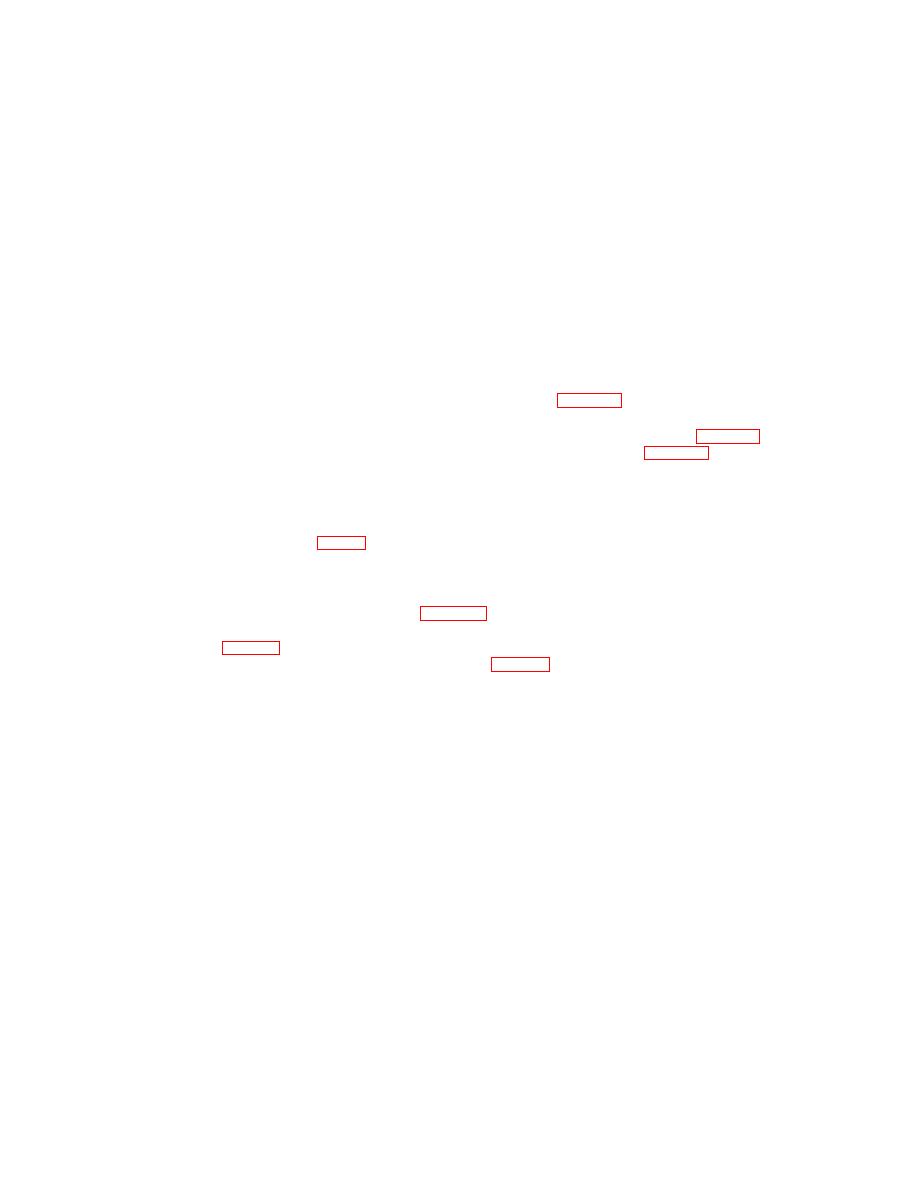
TM 5-4310-375-14
insert rotor and shaft assembly (22) through stator assembly (26). Assemble thrust washer (14) and
endplate (13); install four through bolts (12) and nuts (11). Tighten nuts alternately and evenly to draw
assembly together.
(4) Install two lubrication fittings (15), place key (16) in keyway of shaft and tape in position until ready to
assemble drive pulley onto shaft.
(5) If removed, assemble conduit box gasket (10) and conduit box (9); secure with two screws (8). Assemble
conduit cover gasket (7), conduit box cover (6) and secure with four screws (5) until ready to connect
conduit (29) and make wire connections.
(6) Use lifting device attached to eye bolt (23) and move motor assembly (4) to unit. Place motor assembly on
air receiver saddle and attach with four screws (3), flat washers (2) and locknuts (1).
(7) Remove four screws (5), conduit box cover (6), and gasket (7). Install conduit washers (28) and conduit
connector (27) attaching conduit (29) from pressure switch. Make wiring connections as tagged at disassem-
bly; also, refer to connection diagram plate (25) on side of motor and figure 1-2.
(8) Install cover gasket (7), conduit box cover (6) and secure cover with four screws (5). Refer to para 4-14 and
install drive pulley and drive belts. Adjust belt tension and install belt guard, refer to figure 2-3.
Pressure switch. When notified by organizational maintenance of malfunction of pressure switch during their
5-6.
inspection, direct support maintenance is as follows:
a. Adjustment. The pressure switch (7, fig 5-2) is installed so that air receiver tank pressure is applied directly to
the diaphragm (11) of the switch. The electrical contact (10) operation results when the pressure changes within the
tank are transmitted by the diaphragm (11) to the switch mechanism. Design cut-in pressure is 175 psi 10 psi (12.3 0.70
2
kgs/cm2) and cut-out pressure is 200 psi+ 0 - 10 psi (14.1 + 0-0.70 kgs/cm ). The cut-in to cut-out range is termed the
differential pressure. To adjust the pressure switch, refer to figure 5-2, and proceed as follows:
(1) Start the unit (para 2-7.a) and observe the air pressure gauge on the receiver tank to determine the cut-in and
cut-out pressures. If adjustment is necessary, stop the unit (para 2-7.c) and turn OFF main power source.
(2) Remove the cover (8) from pressure switch (7).
(3) To raise the cut-in and cut-out pressures, turn the pressure adjusting screw (12) clockwise, or to decrease,
turn counterclockwise.
CAUTION
When adjusting the differential screw (13), do not turn farther than it will turn
easily.
(4) To increase differential pressure, turn differential adjusting screw (13) clockwise, or to decrease, turn
counterclockwise.
(5) To increase the differential and maintain the same cut-out pressure, turn the differential adjusting screw
(13) clockwise and, at the same time, turn pressure adjusting screw (12) counterclockwise.
NOTE
If the differential is increased only by turning the differential adjusting screw (13)
clockwise, the cut-in pressure changes only slightly, and the cut-out pressure rises.
5-6

